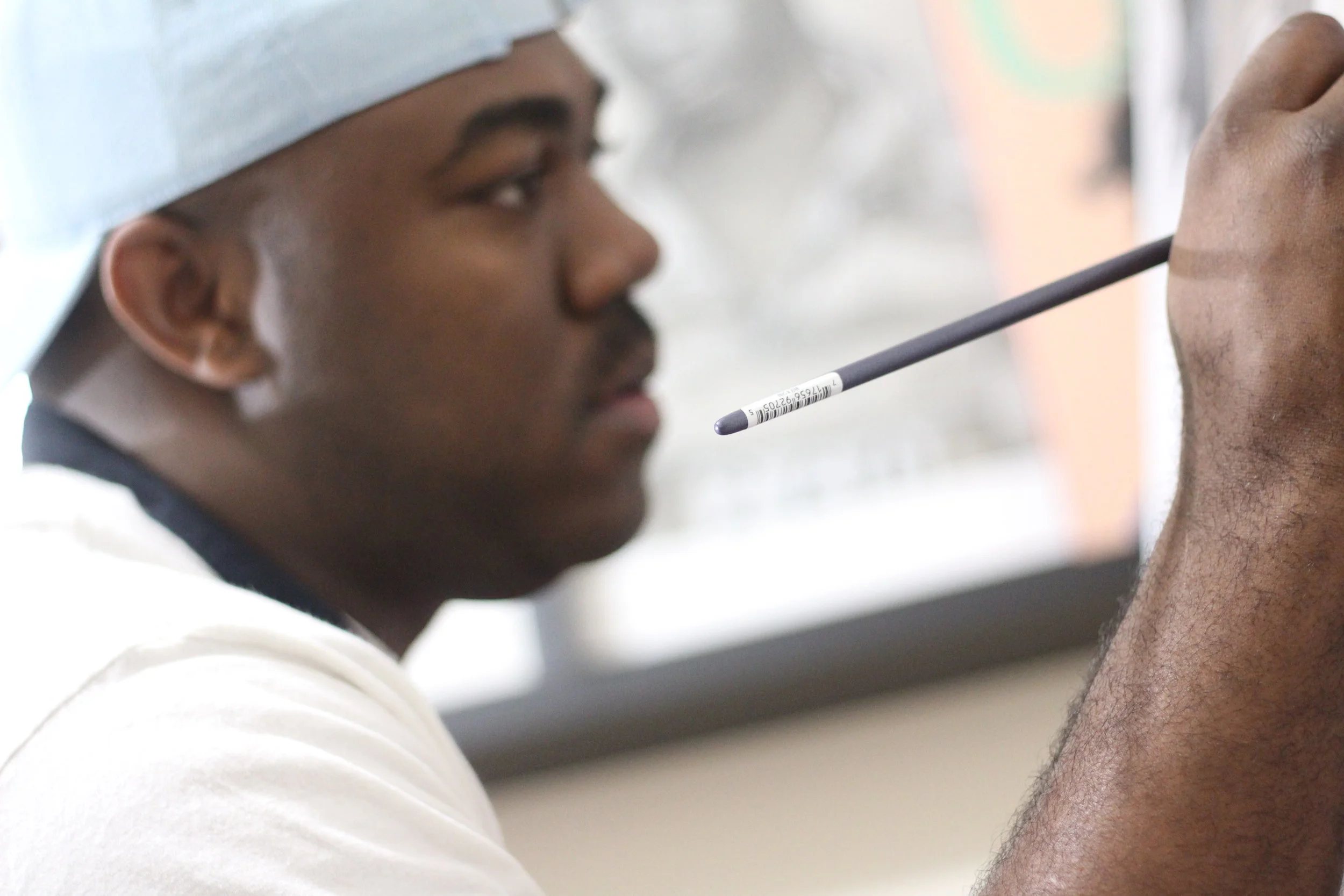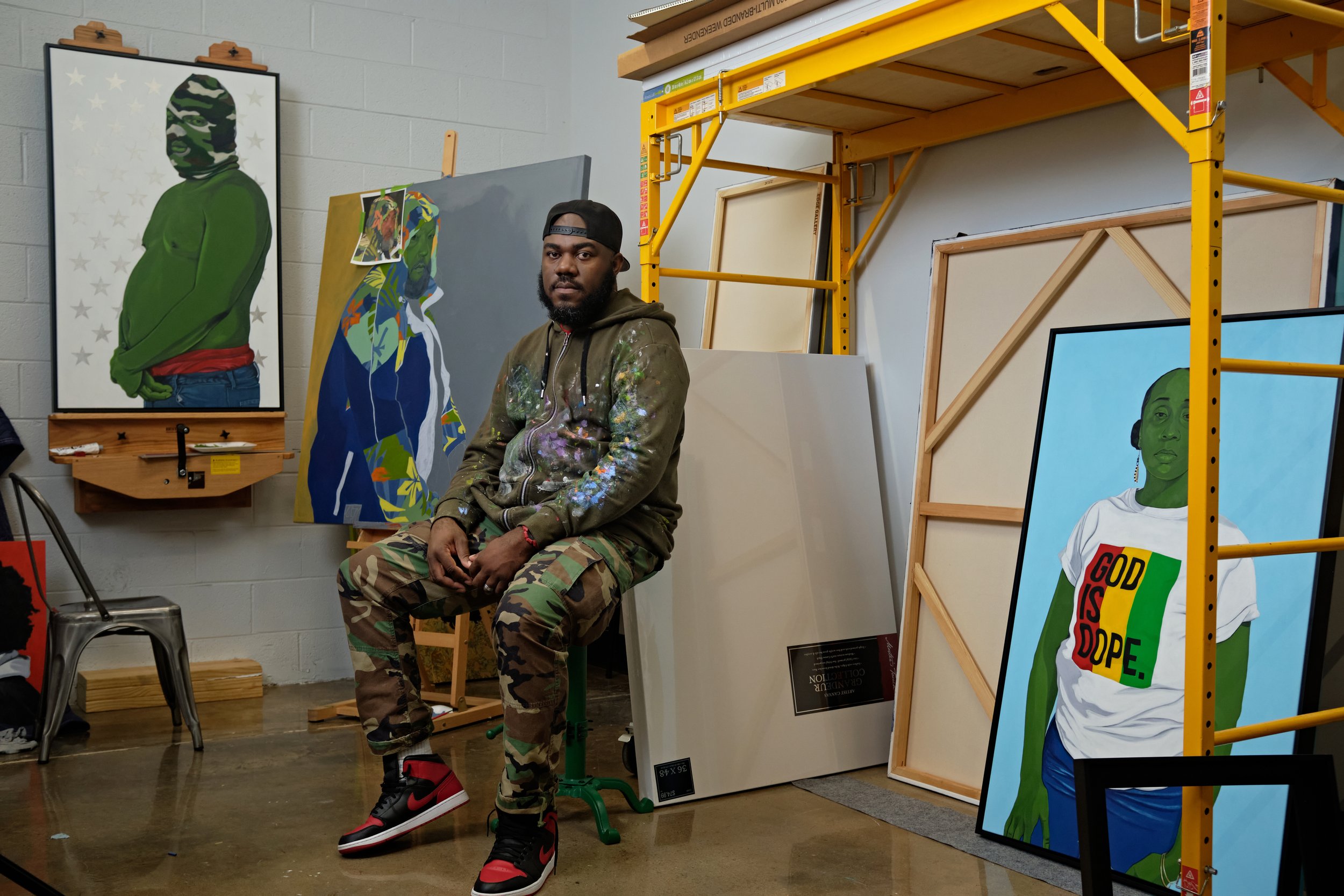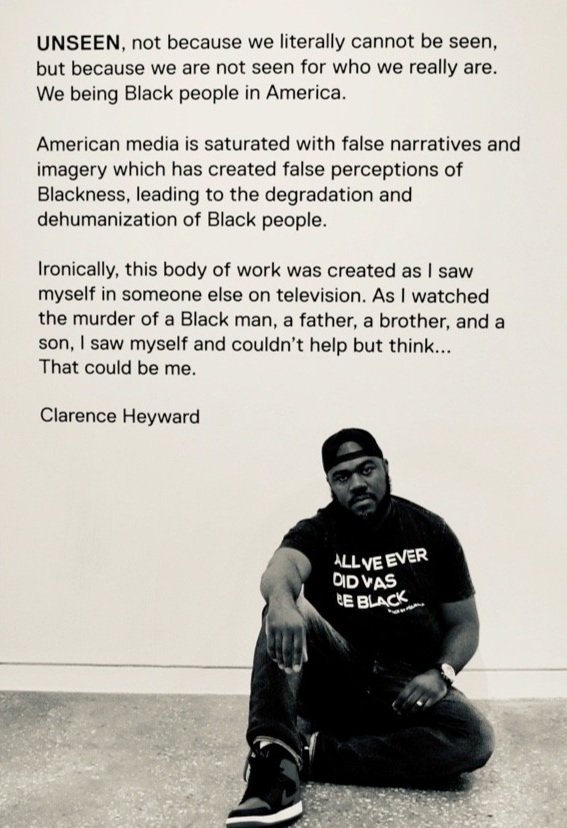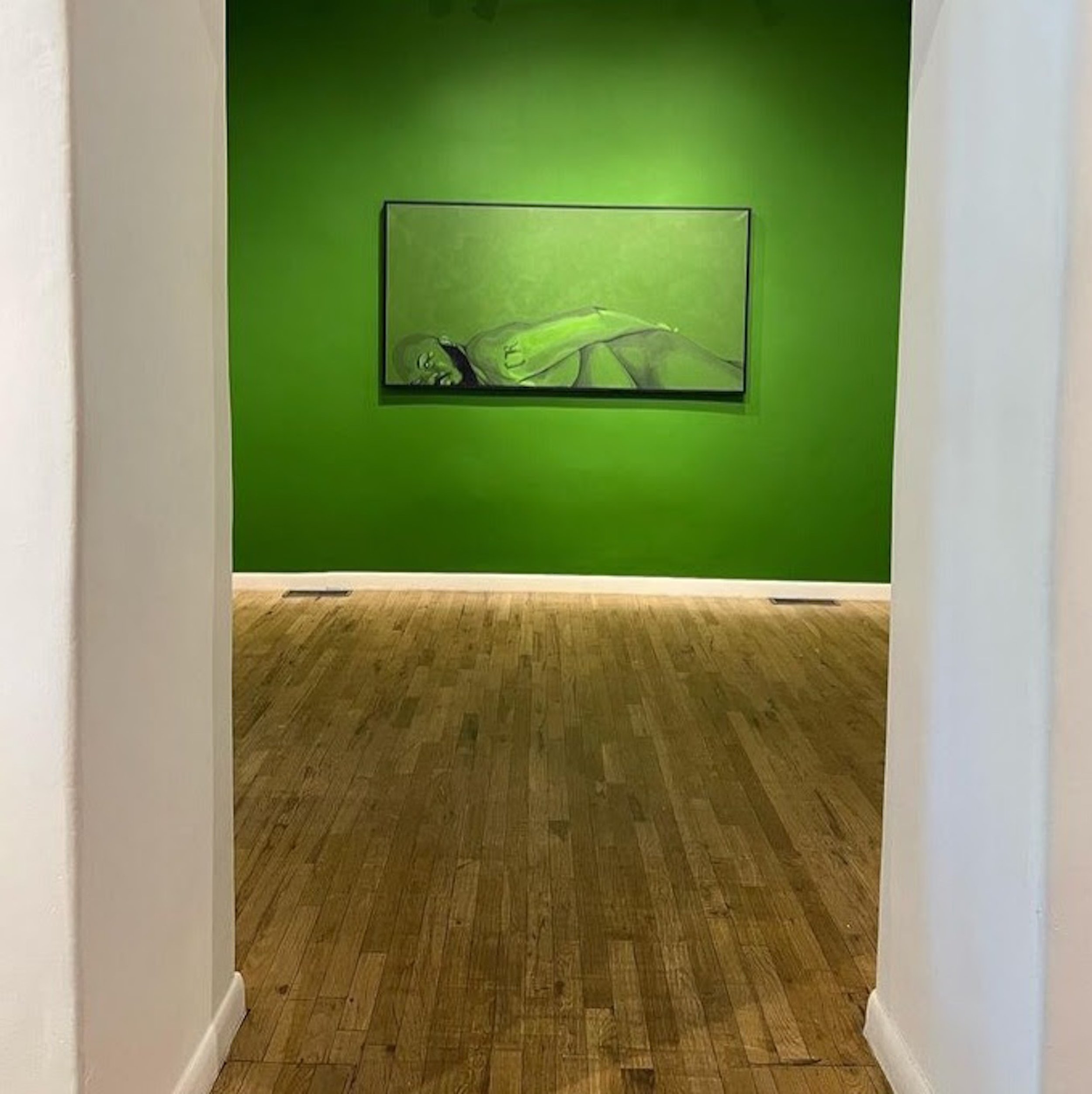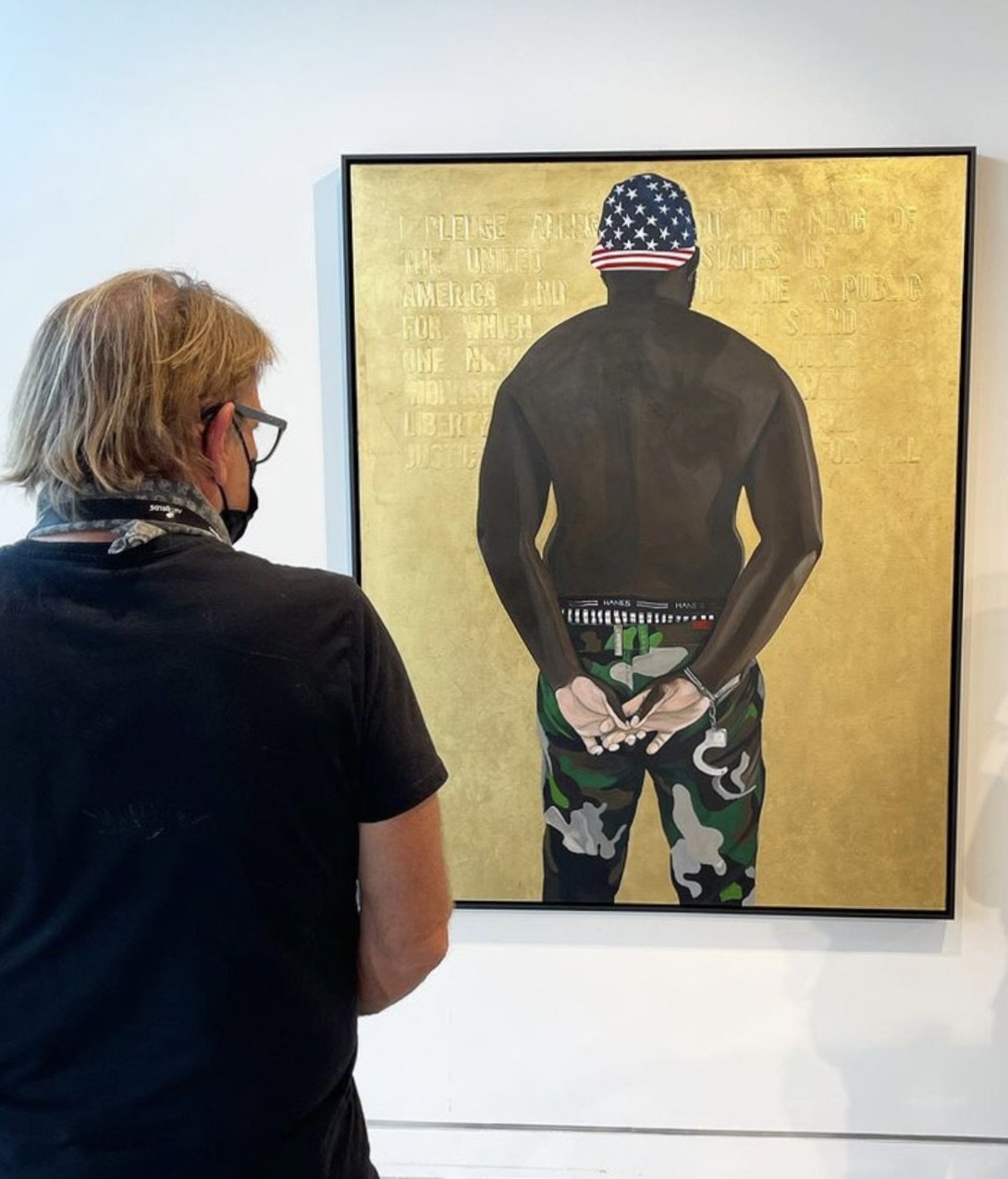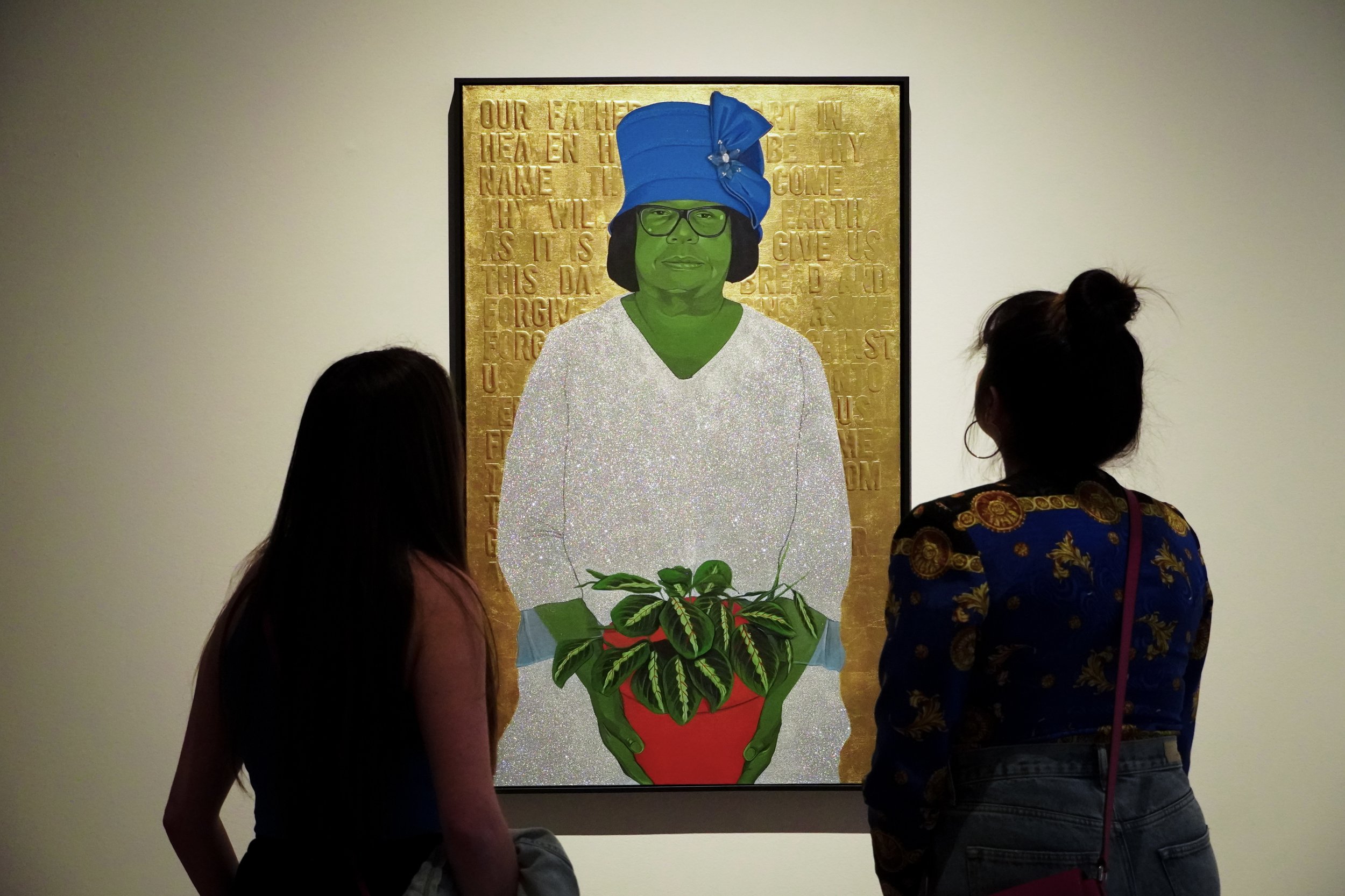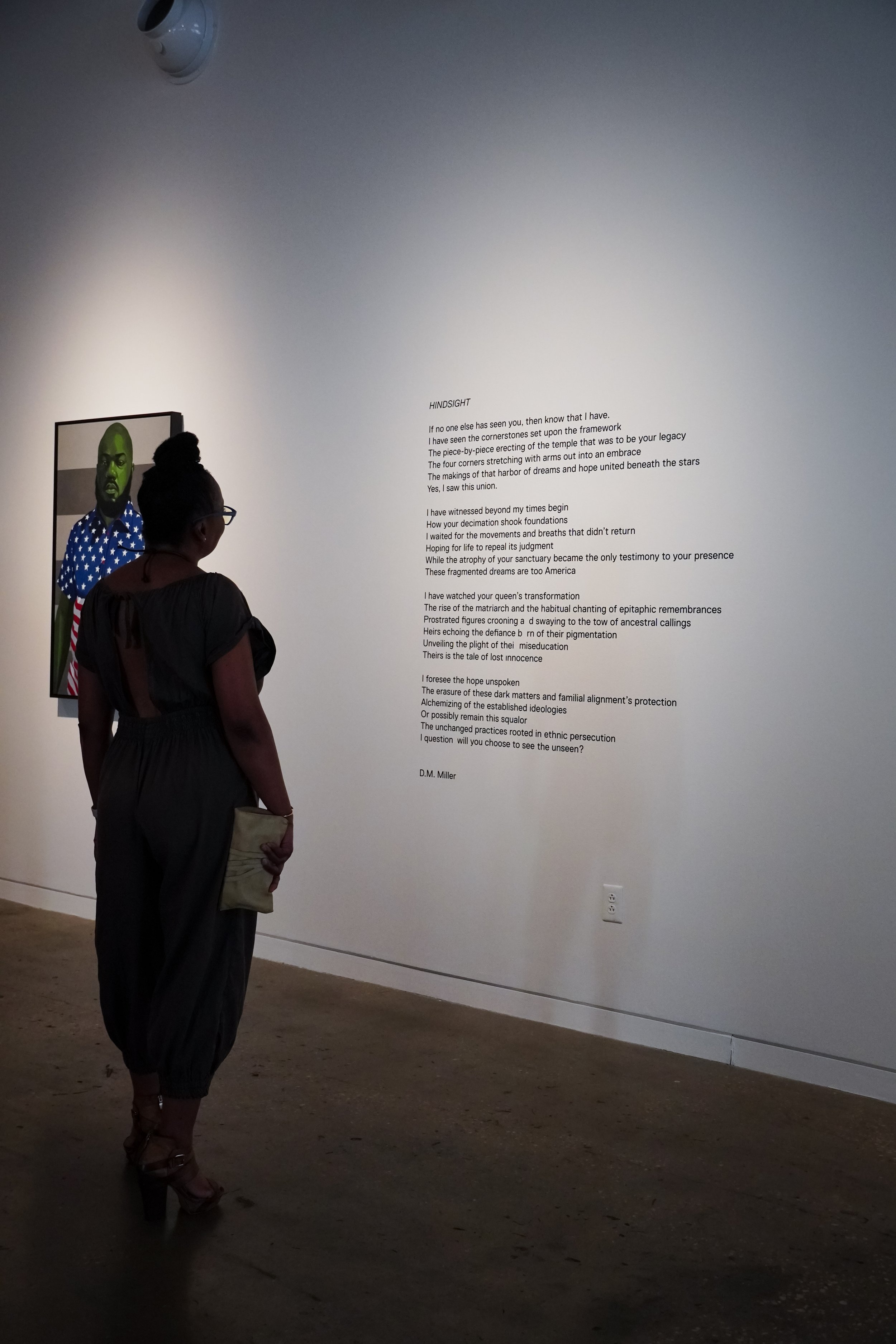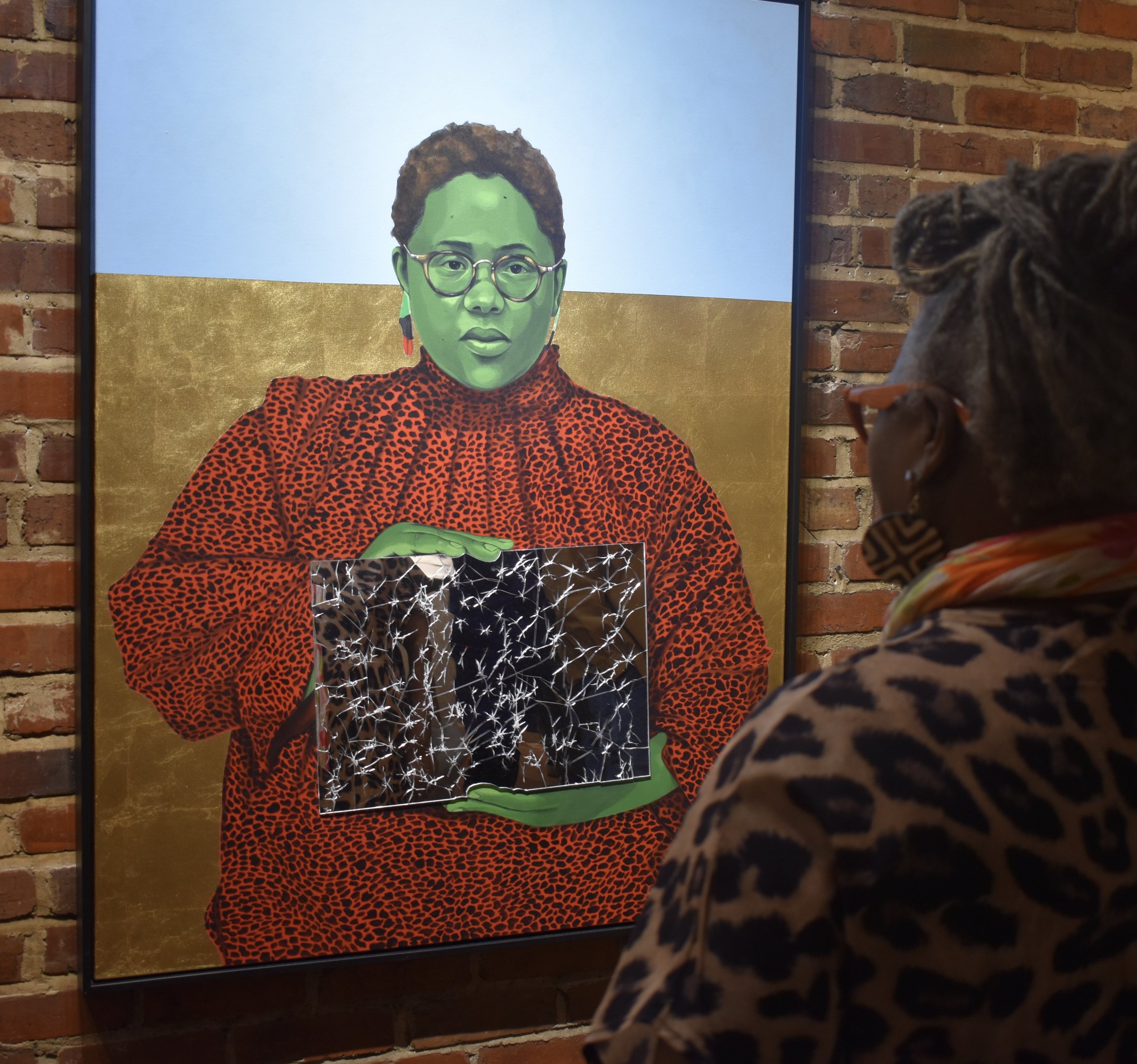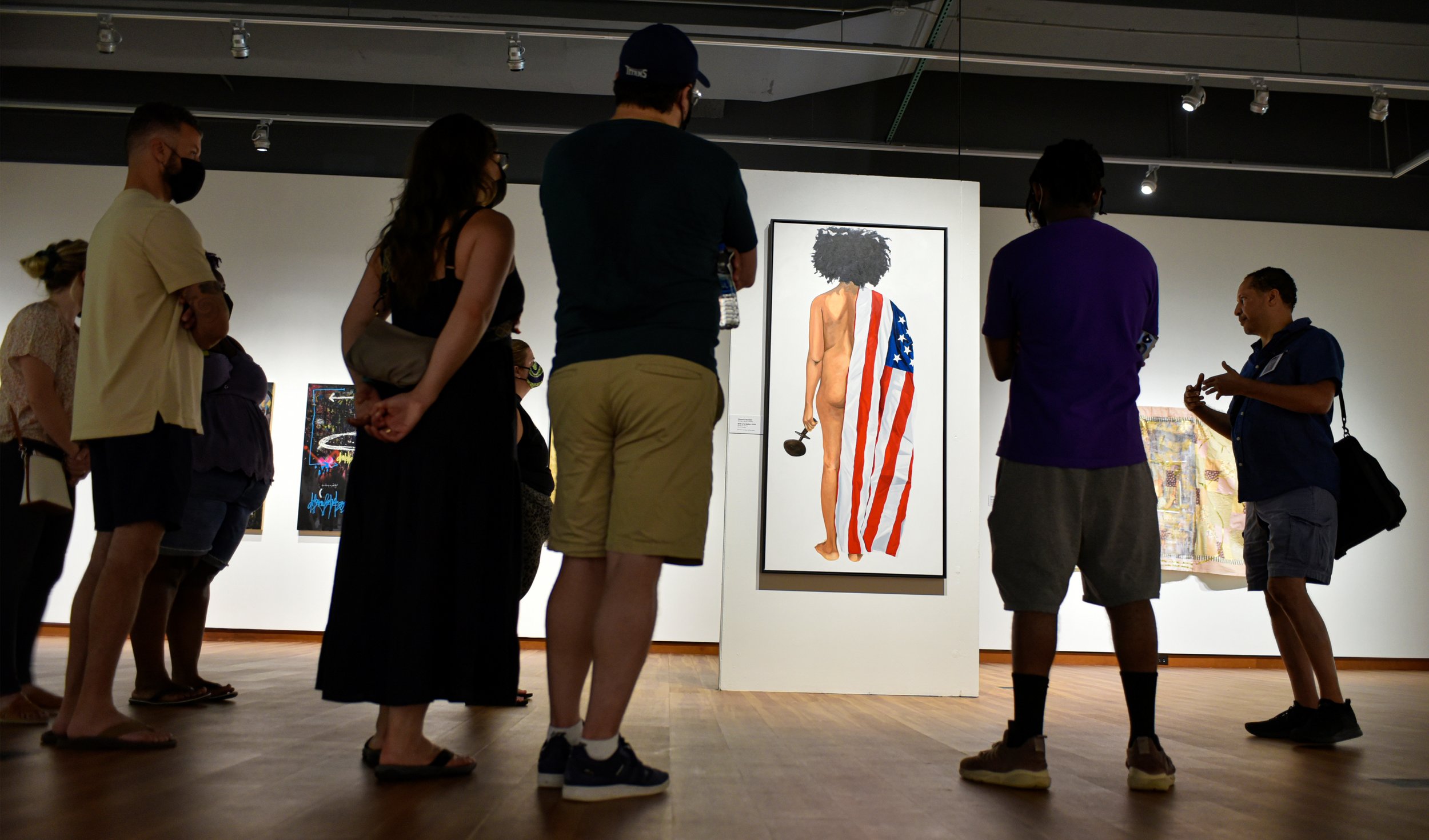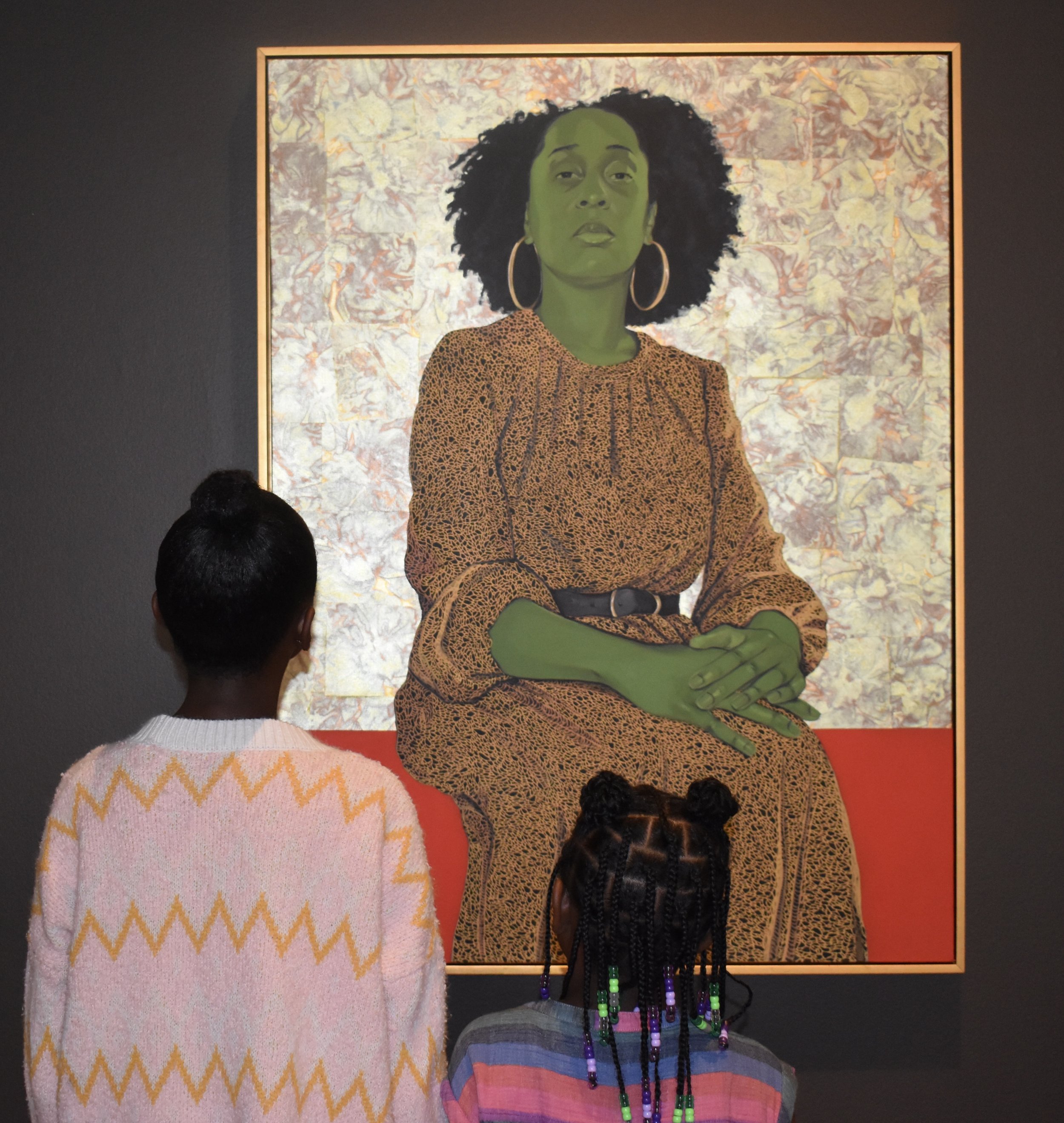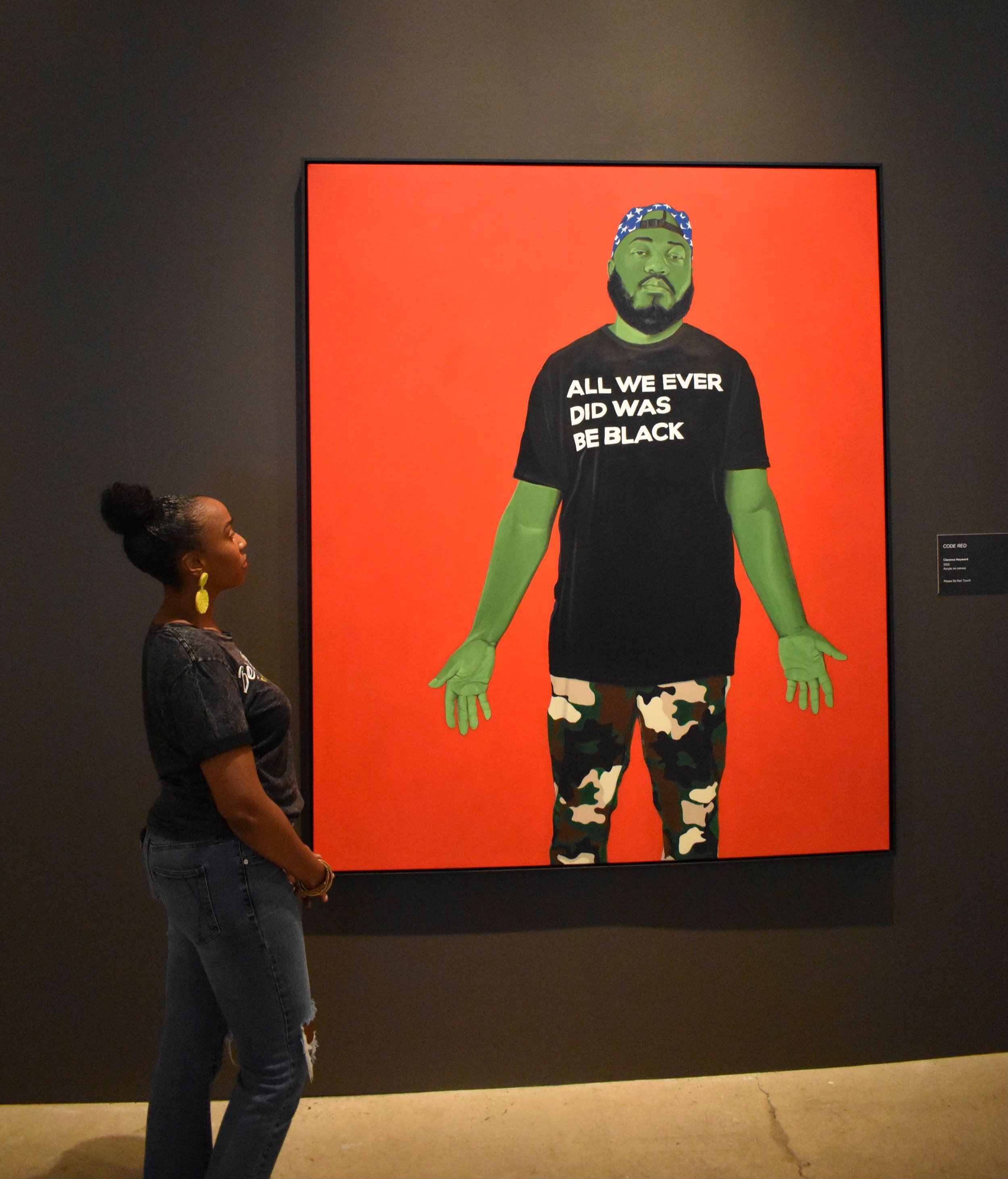.
BIOGRAPHY
Clarence Heyward is a painter whose work investigates cultural truths, challenges stereotypes, and examines identity.
He has exhibited his work in spaces nationally including the 21c Museum of Durham, the Harvey B. Gantt Center for Cultural Arts, the Wiregrass Museum, the Museum of Science and Industry Chicago, the Art Miami Art Fair, the Dallas Art Fair, Expo Chicago, the Container-Santa Fe, the Cameron Art Museum, the North Carolina Museum of Art, the Nasher Museum of Art at Duke University, and (CAM) the Contemporary Art Museum of Raleigh, NC.
Heyward was the recipient of The Brightwork Fellowship residency at Anchorlight Raleigh in 2019-2020, the Emerging Artist in Residence at Artspace, Raleigh in 2021, the Ragdale (IL) artist fellowship in 2022, the 2022 Artist in Residence at NC State University, an IEA Artist in Residence at Alfred University in NY in 2023, and the Al Maqam artist residency in Marrakech, Morocco (2024). His work is in the collections of several notable private and public collections including the North Carolina Museum of Art, the Nasher Museum of Art, the Mint Museum of Art, the Minneapolis Institute of Art, the Ackland Art Museum, and the Cameron Museum of Art.
ARTIST STATEMENT
Using painting as my primary tool of communication, I make work examining my identity as a Black American man, husband and father; creating compositions documenting my life experiences and examining how the media is used to inform, misinform and shape the perception of Black Americans and our collective culture. Much of my work is influenced by my memories which serve as a database filled with television shows, movies, music, and pop-culture that become metaphors and/or references used in my compositions.
In my imagery, the media's depiction of Black Culture is referenced by the use of green skin. This is a direct reference to Chroma Key, otherwise known as "green screen" technology, the process used for editing and shaping the perception of realities in film and television programming.
Positioning my family as the principal subjects in my work allows me to record our existence, absent of preconceived notions of Black culture and the superabundant depictions of trauma, and instead document the authenticity and realities of our lives from a first person perspective. Consequently, this provides an alternative entry into the conversation of existing while Black in America.
